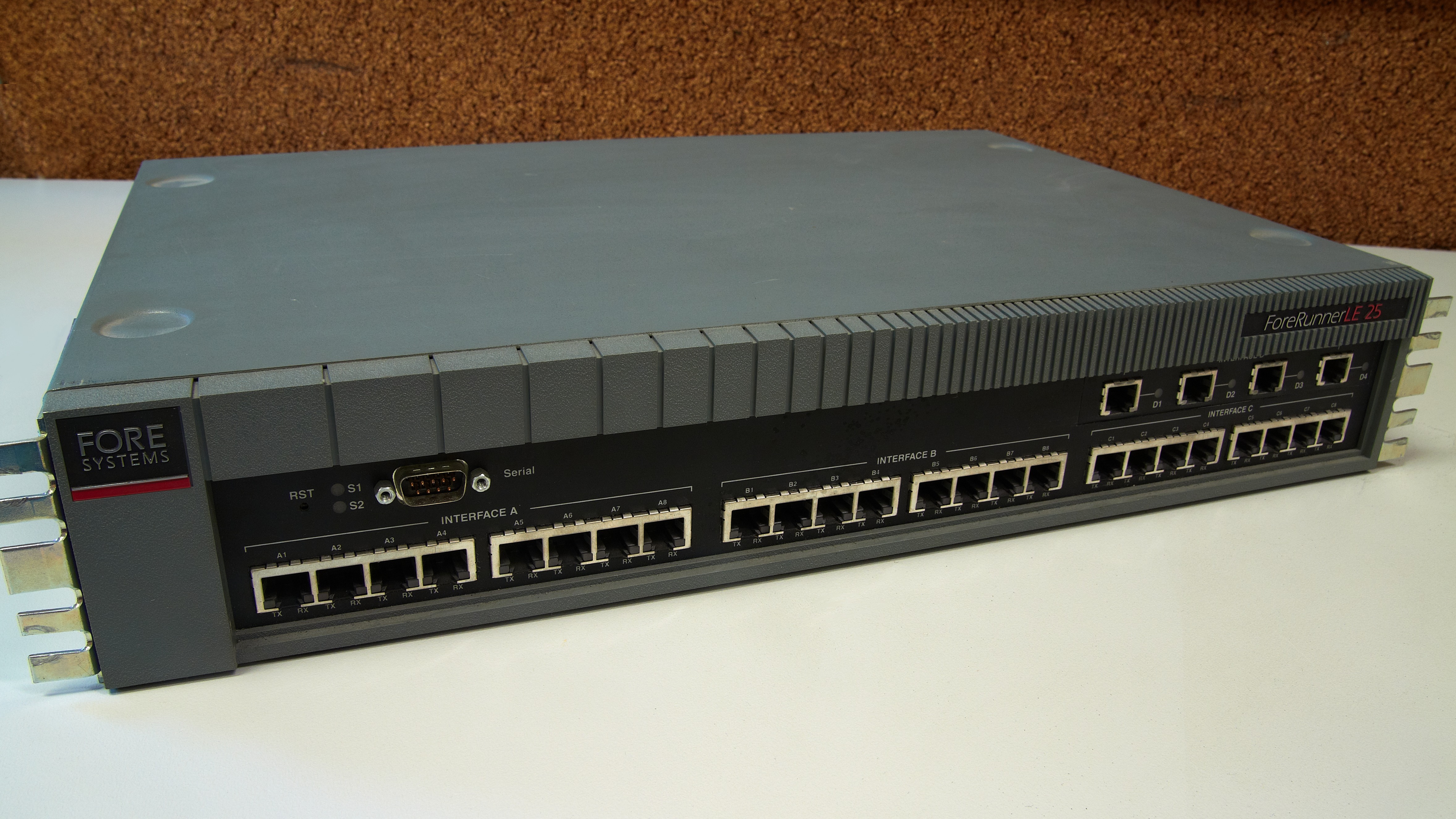The PowerPoint
Slide 3
In the TCP/IP model, switching and bridging reside in the network access or interface layer. IP and routing reside at the internet layer. So, this is the bottom layer of TCP/IP.
In the OSI Reference model, switching and bridges reside in the data link layer. IP and routing reside at the networking layer. Sort of.
However, your usual $25 home router can do a little of both layers.
Slide 4
Cell switching involves breaking a message into smaller units and putting them back to together when they arrive at their destination. This is done at the data link layer.
Segmentation and reassembly involves breaking a message into smaller units and putting them back to together when they arrive at their destination. This is done at the network layer.
Slide 6
The NETGEAR switches in RRO 223 cost about $20 each.
Slide 7
The bus and ring are made to look like a star.
Token ring? Didn’t that disappear in the 80’s with Boy George? Token Ring did use Boy George connectors.
Slide 10
But doesn’t the switch operate at the link layer in TCP/IP?
Slide 12
In Ethernet switches, the ports are both input and output.
Slide 13
That’s anywhere on the “physical” network.
Slide 14
Avoid saying a switch has a routing table in front of TCP/IP gurus.
Let’s put in the forwarding table.
Slide 16
The $20 switch might not do that last part.
Slide 17
Widely used? Even real 4G is packet switched.
Slide 37
ATM was to be the solution for voice, data, and video. I suspect that UNC Asheville was one of the last places to install ATM switches for “campus” networking.
Many ATM switches were made by Fore Systems. The switches
look a lot like Ethernet switches.

ATM was to be transmitted by SONET (Synchronous Optical Networking). The OC-N terms for transmission speeds originate with SONET.
Why 48-bytes? The United States wanted 64 and Europe wanted 32.
Slide 38
See Microsoft’s ATM Cell Structure page.
The HEC field is CRC-8-CCITT or x8+x2+x+1. More in Chapter 2.
Slide 42
Several years ago, all the universities in the UNC system were connected into a single extended LAN.
Slide 43
Notice there are no cycles.
Slide 48
It’s not the spanning tree algorithm of CSCI 333. All the significant ideas are revealed in the poem Algorhyme by Radia Perlman.
However, there is a lot more up-to-date information in Wikipedia.
Slide 63 — Virtual LAN
UNC Asheville uses VLANs to divide the bridged network into distinct virtual bridged networks. The virtual networks are connected with routers. The Computer Science “playpen” is implemented with a VLAN.
VLANs are usually implemented with IEEE 802.1Q-2014. For $796 you can buy a copy of the standard. (There’s a copy for $1,399.67 at Amazon.) For $637 you can download a PDF. Or, there may be other alternatives.
Let’s end with another video.